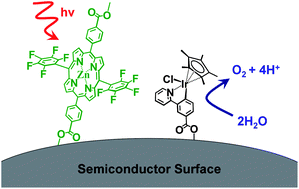A visible light water-splitting cell with a photoanode formed by codeposition of a high-potential porphyrin and an iridium water-oxidation catalyst†
Abstract
A high-potential

- This article is part of the themed collections: Solar energy and Biomimetic approaches to artificial photosynthesis

 Please wait while we load your content...
Please wait while we load your content...